National Musuem Wales – Student Placement Post
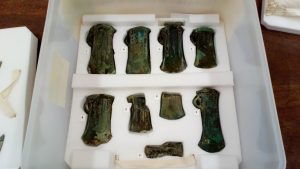
Hi, I’m Kirsty and in October 2019 I began my second-year work placement at the National Museum Wales in Cardiff. Known simply as NMW, it is actually a group of eight different museums across Wales, and I have been spending my weeks working on projects in three of them: National Museum Cardiff, St Fagans National Museum of History and The National Collections Centre. Since my placement has been temporarily put on hold I thought I would use this time to share a few of my projects and experiences. I feel like I crammed a lot into those first 5 months, and I have worked on so many different objects and materials that it is hard to pick which ones to write about, but here are my favourites.
At the National Museum Cardiff I am working in the archaeology conservation lab where objects come in every day which need to be cleaned, repaired or condition checked. In week one I was given an iron age axe hoard to clean and I knew instantly I was going to love my time here.
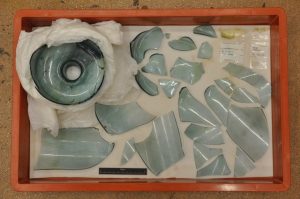
In week two a large Roman glass jar was brought in which had fallen apart during its removal from a display. The previous conservation work from the 1980’s had degraded and no longer supported the broken structure of the jar. I gladly took on the job of adhering it back together as I love a good jigsaw puzzle. I have been using an adhesive which takes a very long time to set so it has been a slow process and as a result I only managed to adhere the base and the lower sides together before the museum was closed. Much of my time was spent investigating different methods of filling the gaps in the glass jar, which is necessary for its structural integrity. I am really hoping to get back into the lab at some point in the next few months as it will be immensely satisfying to complete this object.
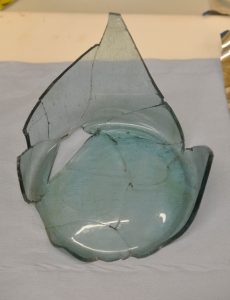
St Fagans National Museum of History is a wonderful outdoor museum which contains over 40 re-erected buildings from around Wales, all of which exhibit and document different periods of living history. The collections are very impressive, and the museum boasts one of the largest collections of musical instruments in the country. As a violinist myself I was over the moon when I was informed I could be working with the instruments and I chose to work on an early 20th century violin which had been in storage for a number of years and was desperately needing some attention.
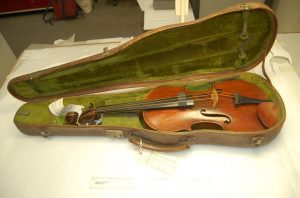
It is the museums desire to play some of the instruments in the collections, so I introduced this concept to my project and after completing some basic conservation treatment I assessed whether the violin was a suitable candidate to be played. This required the structure to be thoroughly investigated using an endoscope and UV light to assess any damage or repairs which have occurred.
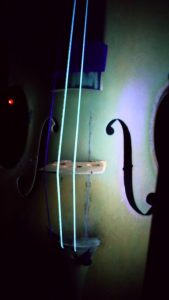
Luckily I completed this investigation before the closure of the museum so whilst I am working from home I can consider my findings from this investigation, and research and create an appropriate care plan for the possible playing of the violin. This will allow the public to experience the instrument in a whole new way.
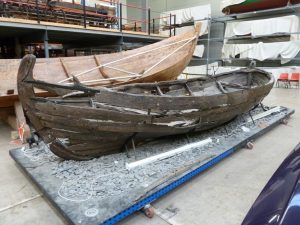
At the National Collections Centre, I am currently working on a reconstructed wooden Tudor boat. It came into the possession of the museum a year ago and there is little to no information on its history, past treatments of the timbers, or the reconstruction of the vessel. It has been handed to me to investigate and find some answers to the many questions we have. I have been analysing the wood and samples of the various substances used to fill gaps and adhere timbers in place, so I can find out what treatments have been performed.

Many days have been spent assessing and reporting on the condition of each timber within the vessel and trying to see if the reconstruction is both stable and accurate according to the initial excavation reports from the 1970’s.
I had a lot of fun cleaning the interior of the vessel as I had to get very creative with some pallets and roofing timbers so I could reach the bottom of the hull. Conservation isn’t always glamorous, and this was certainly true in this instance. Every object presents its own challenges, and this just shows that no day is ever the same in the museum world.

I feel very lucky to have been given the opportunity to work at the National Museum Wales, as it has given me such a wide-ranging and in-depth experience of so many different aspects of conservation within a museum. Although I am currently working from home I hope to get back to the labs soon. Until then, I’m keeping my fingers and toes crossed as I’m itching to get back to the objects I have grown to love over the last 5 months.
Kirsty
